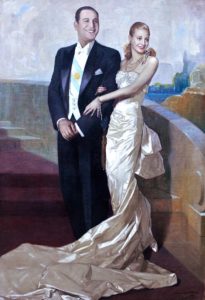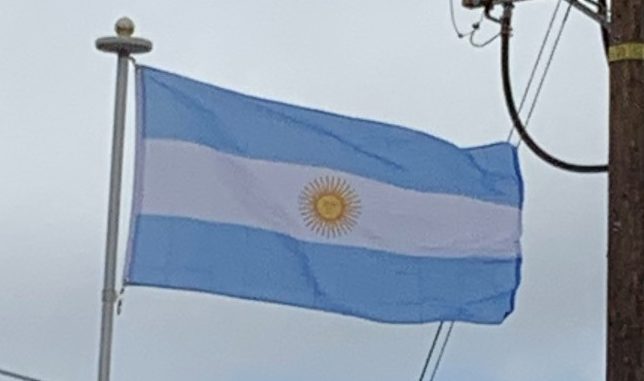Uriburu ruled for two years; then Agustín Pedro Justo was elected in a fraudulent election, and signed a controversial treaty with the United Kingdom. Argentina stayed neutral during World War II, a decision that had full British support but was rejected by the United States after the attack on Pearl Harbor. A new military coup toppled the government, and Argentina declared war on the Axis Powers on March 27, 1945, a month before the end of World War II in Europe. The minister of welfare, Juan Domingo Perón, was fired and jailed because of his high popularity among workers. His liberation was forced by a massive popular demonstration, and he went on to win the 1946 election.
Peronist Years:
Perón created a political movement known as Peronism. He nationalized strategic industries and services, improved wages and working conditions, paid the full external debt and achieved nearly full employment. The economy, however, began to decline in 1950 because of over-expenditure. His highly popular wife, Eva Perón, played a central political role. She pushed Congress to enact women’s suffrage in 1947, and developed an unprecedented social assistance to the most vulnerable sectors of society. However, her declining health did not allow her to run for the vice-presidency in 1951, and she died of cancer the following year. Perón was reelected in 1951, surpassing even his 1946 performance. In 1955 the Navy bombed the Plaza de Mayo in an ill-fated attempt to kill the President. A few months later, during the self-called Liberating Revolution coup, he resigned and went into exile in Spain.

The new head of State, Pedro Eugenio Aramburu, proscribed Peronism and banned all of its manifestations; nevertheless, Peronists kept an organized underground. Arturo Frondizi from the UCR won the following elections. He encouraged investment to achieve energetic and industrial self-sufficiency, reversed a chronic trade deficit and lifted Peronism proscription; yet his efforts to stay on good terms with Peronists and the military earned him the rejection of both and a new coup forced him out. But Senate Chief José María Guido reacted swiftly and applied the anti-power vacuum legislation, becoming president instead; elections were repealed and Peronism proscribed again. Arturo Illia was elected in 1963 and led to an overall increase in prosperity; however his attempts to legalize Peronism resulted in his overthrow in 1966 by the Juan Carlos Onganía-led coup d’état called the Argentine Revolution, creating a new military government that sought to rule indefinitely.
Military Dictatorship, the Dirty War and Defeat in the Falklands War:
The “Dirty War” (Spanish: Guerra Sucia) was part of Operation Condor which included participation of the right-wing dictatorships of the Southern Cone. The Dirty War involved state terrorism in Argentina and elsewhere in the Southern Cone against political dissidents, with military and security forces employing urban and rural violence against left-wing guerrillas, political dissidents, and anyone believed to be associated with socialism or somehow contrary to the neoliberal economic policies of the regime. Victims of the violence in Argentina alone included an estimated 15,000 to 30,000 left-wing activists and militants, including trade unionists, students, journalists, Marxists, Peronist guerrillas and alleged sympathizers. Most were victims of state terrorism. The guerrillas, whose number of victims are nearly 500-540 between military and police officials and up to 230 civilians Argentina received technical support and military aid from the United States government during the Johnson, Nixon, Ford, Carter, and Reagan administrations.
